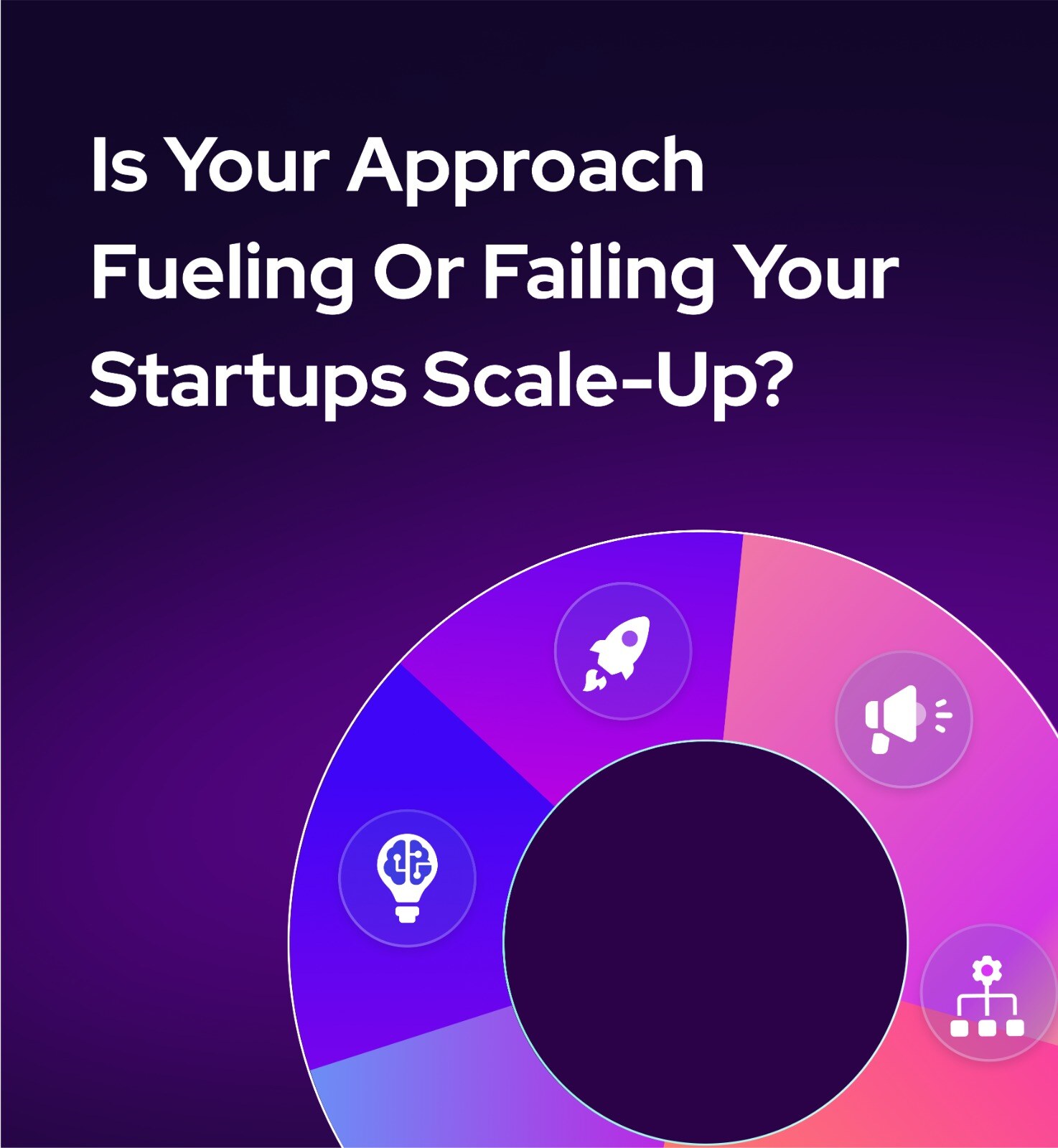Scaling Startups: Content Strategies for Hypergrowth
In the fast-paced world of startups, achieving hypergrowth is the ultimate goal. But how do you fuel that rapid expansion?
One of the most powerful tools in a startup's arsenal is a well-crafted content strategy. In this comprehensive guide, we'll explore how scaling startups can leverage content to drive hypergrowth.
The Role of Content in Startup Growth
Before diving into strategies, it's crucial to understand why content is so vital for scaling startups. Content serves multiple purposes:
- Brand Awareness: It helps you reach and engage new audiences.
- Trust Building: Quality content establishes your startup as an authority in your field.
- Lead Generation: It attracts potential customers and nurtures them through the sales funnel.
- Customer Education: Content can help users understand and get more value from your product.
- SEO: A solid content strategy improves your search engine rankings, driving organic traffic.
Now, let's explore the key strategies that can help your startup leverage content for hypergrowth.
- Align Your Content Strategy with Your Growth Goals
The first step in creating a scalable content strategy is ensuring it aligns with your overall growth objectives. This alignment is a core principle of the Scaleup Methodology's Sales pillar.
Start by clearly defining your growth targets. Are you aiming to:
- Expand into new markets?
- Increase customer acquisition?
- Improve customer retention?
- Launch new products or features?
Once you've identified your goals, tailor your content strategy to support them. For instance, if you're expanding into new markets, create content that addresses the specific needs and pain points of customers in those markets.
- Develop a Content Production System
To scale your content efforts, you need a systematic approach to content creation. This involves:
- Creating a content calendar: Plan your content topics and publishing schedule in advance.
- Establishing clear workflows: Define the steps from ideation to publication, including who's responsible for each stage.
- Using templates: Create templates for different types of content to streamline the creation process.
- Leveraging technology: Use content management systems and project management tools to organize and automate your content efforts.
Remember, the goal is to create a repeatable process that can easily scale as your startup grows.
- Focus on Quality and Depth
While quantity is important for scaling, quality should never be compromised. In fact, in-depth, high-quality content often performs better in search engines and is more likely to be shared, extending your reach organically.
Consider creating:
- Comprehensive guides
- Original research reports
- Detailed case studies
- Expert interviews
These types of content provide substantial value to your audience and position your startup as a thought leader in your industry.
- Embrace Content Repurposing
One of the most efficient ways to scale your content efforts is through repurposing. This involves taking a single piece of content and adapting it into multiple formats. For example:
- Turn a blog post into an infographic
- Extract key points from a whitepaper to create a series of social media posts
- Convert a webinar into a podcast episode
- Compile several related blog posts into an ebook
This approach allows you to reach different audience segments and maximize the value of each piece of content you create.
- Leverage User-Generated Content
As your user base grows, tap into the power of user-generated content (UGC). Encourage customers to share their experiences, create video testimonials, or write guest blog posts. UGC not only provides social proof but also helps you scale your content production without significantly increasing your resources.
- Implement a Data-Driven Approach
To achieve hypergrowth, your content strategy needs to be guided by data. This aligns with the Scaleup Methodology's emphasis on data-driven decision-making. Key steps include:
- Setting up robust analytics: Use tools like Google Analytics to track your content performance.
- Defining key performance indicators (KPIs): These might include traffic, engagement rates, conversion rates, and revenue attribution.
- Regularly analyzing performance: Review your data weekly or monthly to identify trends and opportunities.
- A/B testing: Continuously test different aspects of your content, from headlines to formats, to optimize performance.
Use these insights to refine your strategy, doubling down on what works and pivoting away from what doesn't.
- Build a Scalable Distribution Strategy
Creating great content is only half the battle; you also need to ensure it reaches your target audience. A scalable distribution strategy might include:
- SEO optimization: Ensure all your content is optimized for search engines to drive organic traffic.
- Email marketing: Build and segment your email list to deliver targeted content to different audience segments.
- Social media automation: Use tools to schedule and automate your social media posts across multiple platforms.
- Paid promotion: Allocate budget for paid promotion of your best-performing content to extend its reach.
- Influencer partnerships: Collaborate with industry influencers to amplify your content's reach.
- Create a Content Flywheel
A content flywheel is a self-reinforcing cycle where your content efforts fuel each other, creating momentum that drives growth. Here's how it works:
- Create high-quality, SEO-optimized content that attracts organic traffic.
- Use that content to capture leads through email sign-ups or content downloads.
- Nurture those leads with more targeted content, moving them through the sales funnel.
- Encourage satisfied customers to create UGC, which feeds back into your content ecosystem.
As this flywheel gains momentum, it becomes a powerful engine for growth.
- Develop a Multichannel Content Strategy
Don't put all your eggs in one basket. A truly scalable content strategy leverages multiple channels to reach and engage your audience. This might include:
- A company blog
- Social media platforms
- Video content (YouTube, TikTok, Instagram Reels)
- Podcasts
- Webinars
- Guest posting on industry publications
Each channel can reinforce and amplify your message, creating a cohesive brand presence across the digital landscape.
- Invest in Evergreen Content
While timely, trending content has its place, investing in evergreen content is crucial for long-term growth. Evergreen content remains relevant and valuable over time, continuing to drive traffic and leads long after it's published.
Examples of evergreen content include:
- "Ultimate guides" to core topics in your industry
- Frequently asked questions (FAQs)
- How-to tutorials for common processes
- Glossaries of industry terms
This type of content forms a solid foundation for your content strategy, providing consistent value as you scale.
- Foster a Culture of Content
To truly scale your content efforts, content creation shouldn't be siloed in the marketing department. Encourage all team members to contribute their expertise. This could involve:
- Setting up an internal knowledge base where team members can share insights
- Hosting regular "content brainstorming" sessions across departments
- Recognizing and rewarding employees who contribute to content efforts
By tapping into the collective knowledge of your entire team, you can dramatically scale your content production while ensuring diverse, expert perspectives.
- Plan for Internationalization
If your growth plans include expanding into international markets, your content strategy needs to account for this. Consider:
- Translating key pieces of content into target languages
- Creating localized content that addresses specific market needs
- Adapting your content to account for cultural differences
- Building relationships with local influencers and publications
Planning for internationalization from the start will make it much easier to scale into new markets when the time comes.
- Continuously Educate Your Team
The digital landscape is constantly evolving, and your team needs to keep pace. Invest in ongoing education for your content team. This might involve:
- Attending industry conferences
- Participating in webinars and online courses
- Subscribing to leading industry publications
- Bringing in expert consultants for training sessions
By keeping your team at the cutting edge, you ensure your content strategy remains effective as you scale.
Conclusion
A well-executed content strategy can be a powerful driver of hypergrowth for scaling startups. By aligning your content efforts with your growth goals, implementing scalable processes, leveraging data, and continuously optimizing your approach, you can create a content engine that fuels your startup's rapid expansion.
Remember, achieving hypergrowth isn't just about doing more – it's about doing more of the right things. Your content strategy should evolve as your startup grows, always staying aligned with your overall business objectives.
Bridging to Scaleup Methodology
This approach to scaling content strategy aligns perfectly with the Sales pillar of the Scaleup Methodology. By creating a robust, scalable content strategy, startups can effectively drive awareness, engage prospects, and nurture leads through the sales funnel. This systematic approach to content supports the methodology's emphasis on creating repeatable, scalable processes that drive sustainable growth.
Moreover, the data-driven approach we've discussed supports the Scaleup Methodology's focus on metrics and continuous improvement. By regularly analyzing content performance and iterating based on insights, startups can optimize their growth trajectory and make informed decisions about resource allocation.
Ultimately, a strategic approach to scaling your content efforts can be a key differentiator in your startup's journey to hypergrowth, embodying the principles of efficiency, scalability, and data-driven decision-making that are at the heart of the Scaleup Methodology.
Disclaimer
This blog post was initially generated using Inno Venture AI, an advanced artificial intelligence engine designed to support digital product development processes. Our internal team has subsequently reviewed and refined the content to ensure accuracy, relevance, and alignment with our company's expertise.
Inno Venture AI is a cutting-edge AI solution that enhances various aspects of the product development lifecycle, including intelligent assistance, predictive analytics, process optimization, and strategic planning support. It is specifically tailored to work with key methodologies such as ADAPT Methodology® and Scaleup Methodology, making it a valuable tool for startups and established companies alike.
Inno Venture AI is currently in development and will soon be available to the public. It will offer features such as intelligent product dashboards, AI-enhanced road mapping, smart task prioritization, and automated reporting and insights. If you're interested in being among the first to access this powerful AI engine, you can register your interest at https://innoventureai.com/

Take The Test
You May Also Like
These Related Stories

Measuring Success: Key Metrics for Scrum in Scaling Startups

Scaling Your HealthTech Startup With the Scaleup Methodology

